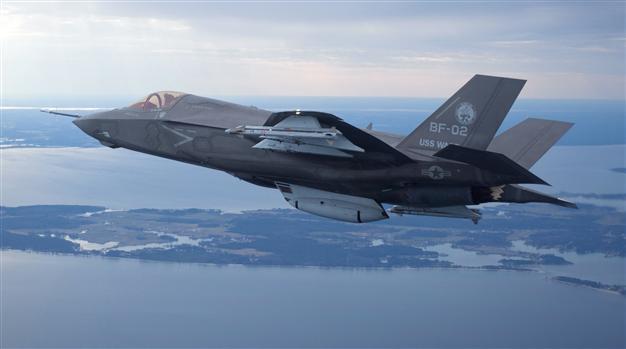F-35 flights should resume soon: Pentagon

File photo of Lockheed Martin's F35 Joint Strike Fighter F-35B test aircraft BF-2 flying with external weapons. REUTERS Photo
The Pentagon's director of the F-35 programme said Monday the next-generation US fighter jet could be back in the air within a fortnight after an engine crack forced the grounding of test flights.Lieutenant General Christopher Bogdan, in Australia for talks on the jet, also dismissed any talk of foreign customers backing out of the costly project to build the F-35, known as the Joint Strike Fighter, because of its delays.
If the crack's cause was as straightforward as a foreign object striking the turbine, or a basic manufacturing defect, "I could foresee the airplane back in the air in the next week or two", Bogdan told reporters in Melbourne.
"If it's more than that then we have to look at what the risk is to the fleet," he said, adding than a verdict on the cracking's cause was expected "by the end of this week".
"My opinion is that the airplane will be back flying within a reasonable period of time if this is not a serious problem." The Pentagon plans to make 2,443 F-35s for the US military and several hundred others for eight international partners including Australia who have invested in the project, as well as at least two customers, Japan and Israel.
Turkey has followed an Italian decision to delay purchase of the JSF, which has laboured under soaring costs and delays.
But Bogdan stressed: "I have no indication whatsoever that any partner is thinking about pulling out of the programme at all.
"I have communicated with all our partners and all the (armed) services about what occurred with the grounding," he said.
"They all understand that, while unfortunate, that it is not an unusual thing to find (that) an engine blade on a newer engine has a crack in it." Bogdan said the small crack had been noticed during a routine 50-hour ground inspection and the entire engine had been shipped back to manufacturer Pratt & Whitney for examination.
"One thing we are grateful for is that we found the problem on the ground during a routine inspection and not in the air where it could have been catastrophic, where it could have damaged the airplane," he said.
All 51 test jets in the US F-35 fleet were grounded and further flights were suspended as a "precautionary measure" Friday after discovery of the crack on a turbine blade in one F-35 engine at Edwards Air Force Base in California.
"I do not anticipate whatsoever that this problem will delay any of the major milestones of the programme at all, I just don't see that happening even in the worst-case scenario," Bogdan said, describing the project as "on course and on schedule". He warned that further teething problems were likely, with only 35-40 percent of the test flight programme completed. "But we have enough money and enough time in development to take care of those things." The Pentagon has high hopes for the radar-evading F-35 fighter, which is supposed to replace most of the combat aircraft fleet of the US Air Force, Navy and Marine Corps by the end of the decade.
Australia has so far committed to delivery of two Joint Strike Fighters (JSFs) in 2014 and a further 12 in 2019-2020. It originally indicated it would buy 100 of the jets, but budgetary constraints last year saw it trim back and delay the order.
Prime Minister Julia Gillard said her government remained committed to the initial order for two jets, but would "continue to monitor and be in discussions about issues that have arisen and need to be addressed".
A defence ministry spokesman said the engines for Australia's first two aircraft were yet to be manufactured and "if any design changes are required to the engine blades then those changes would be incorporated".
















